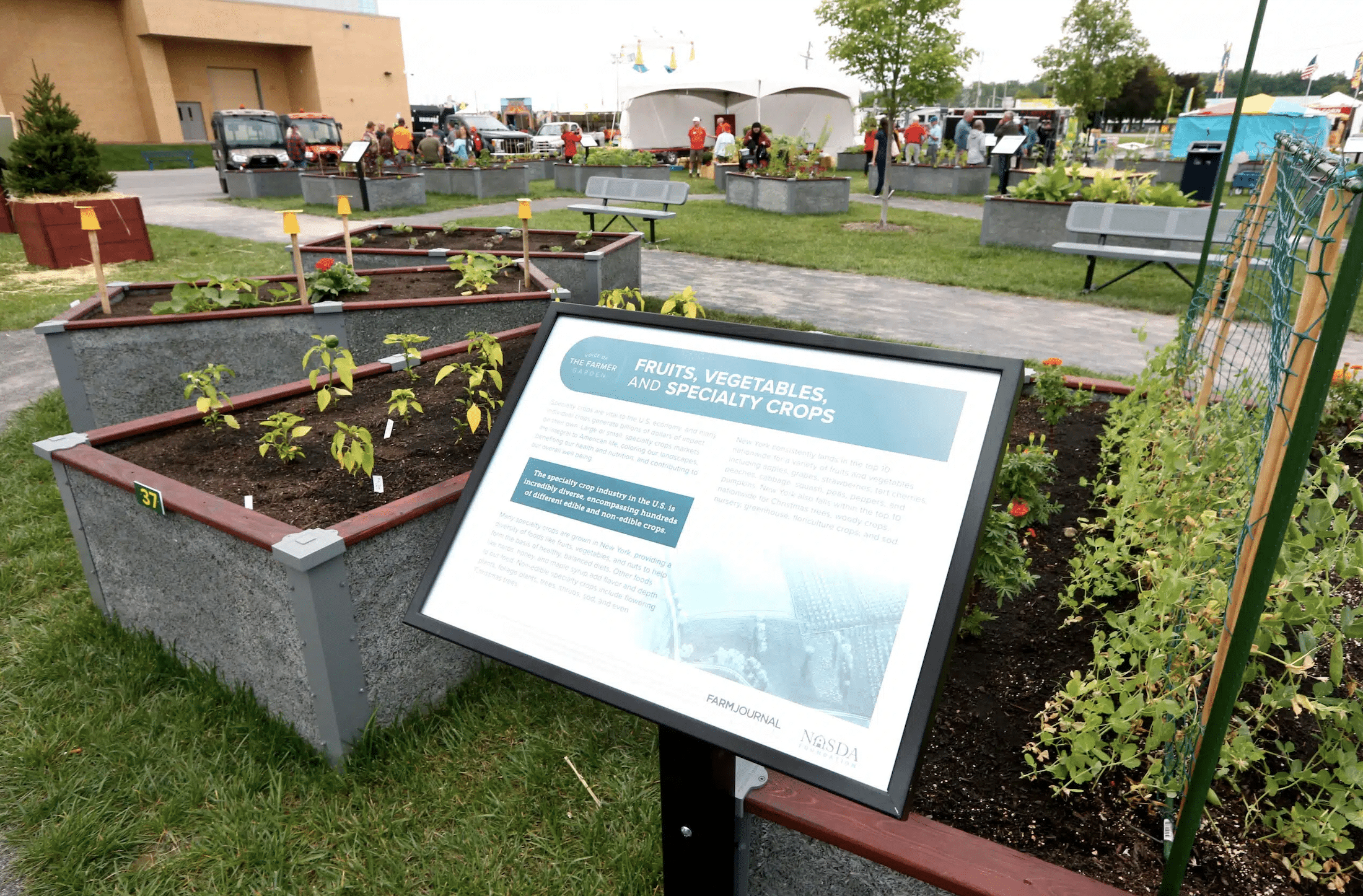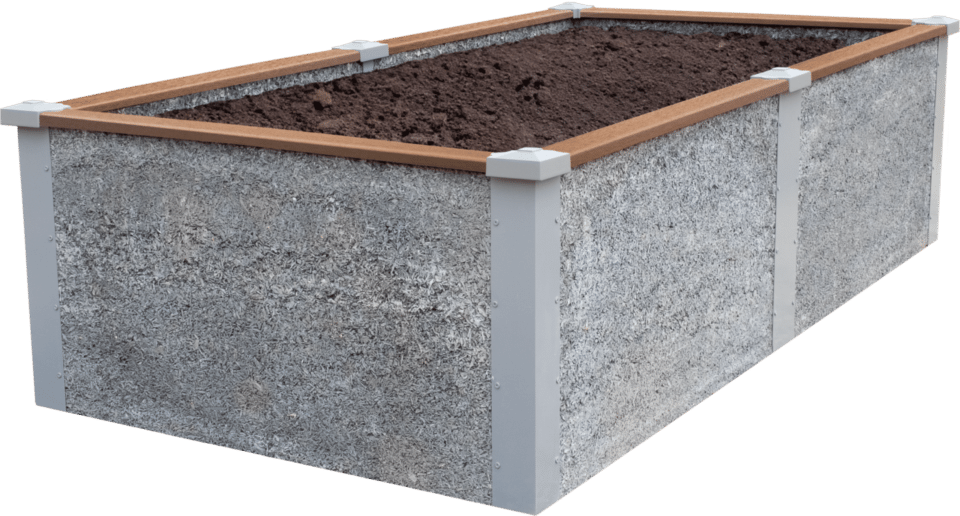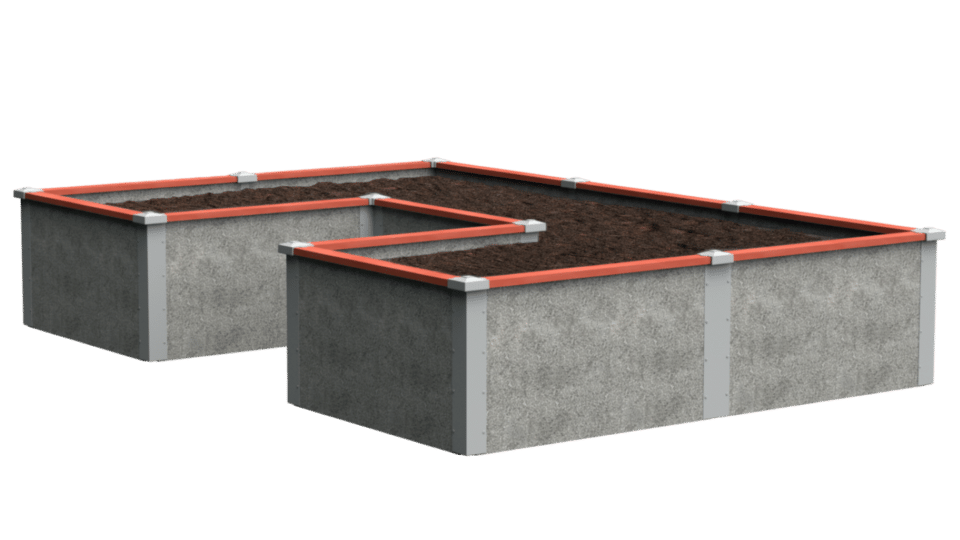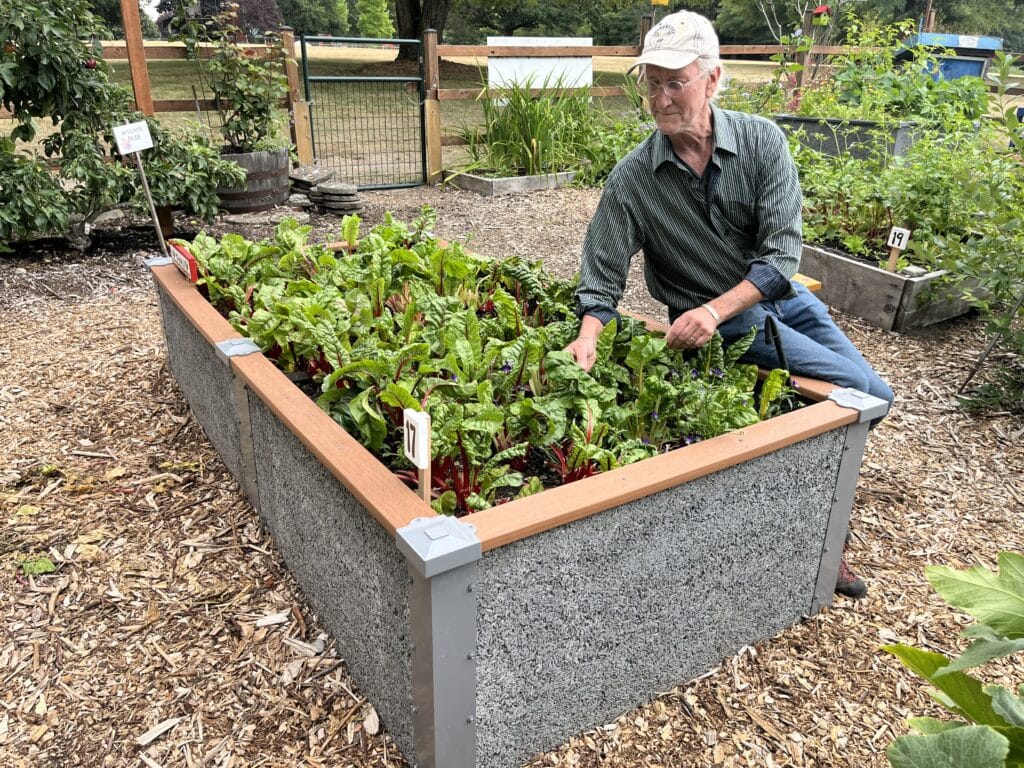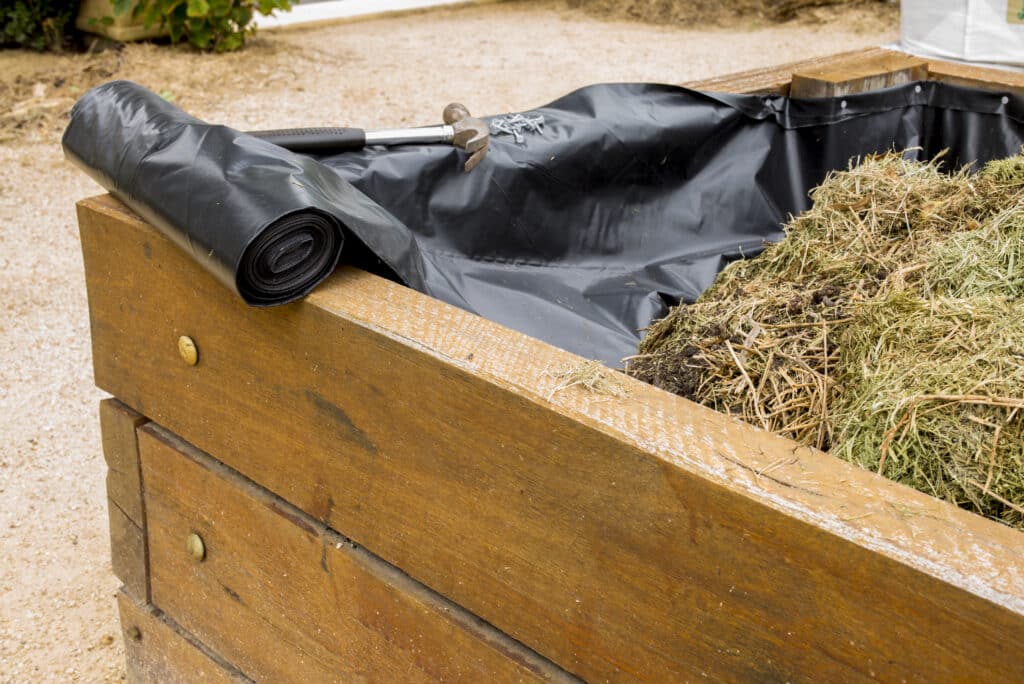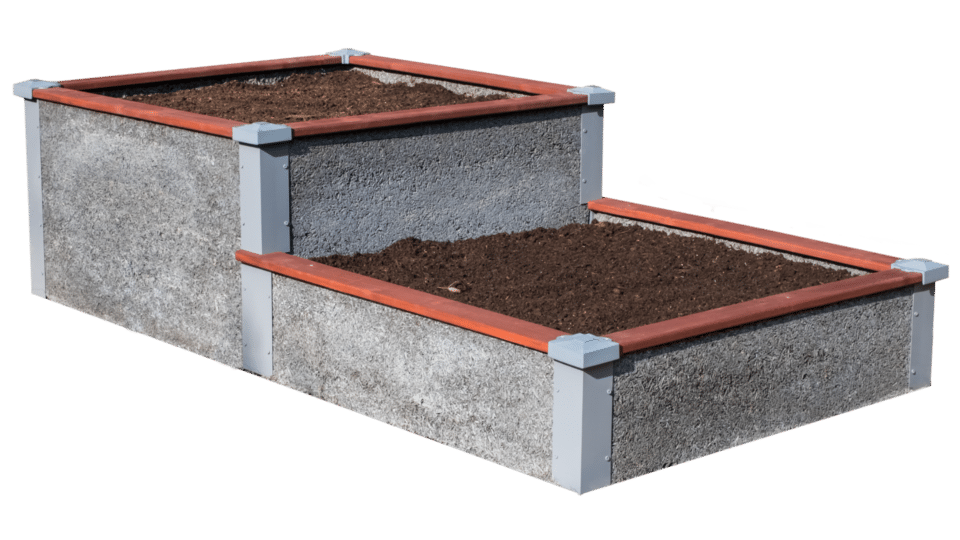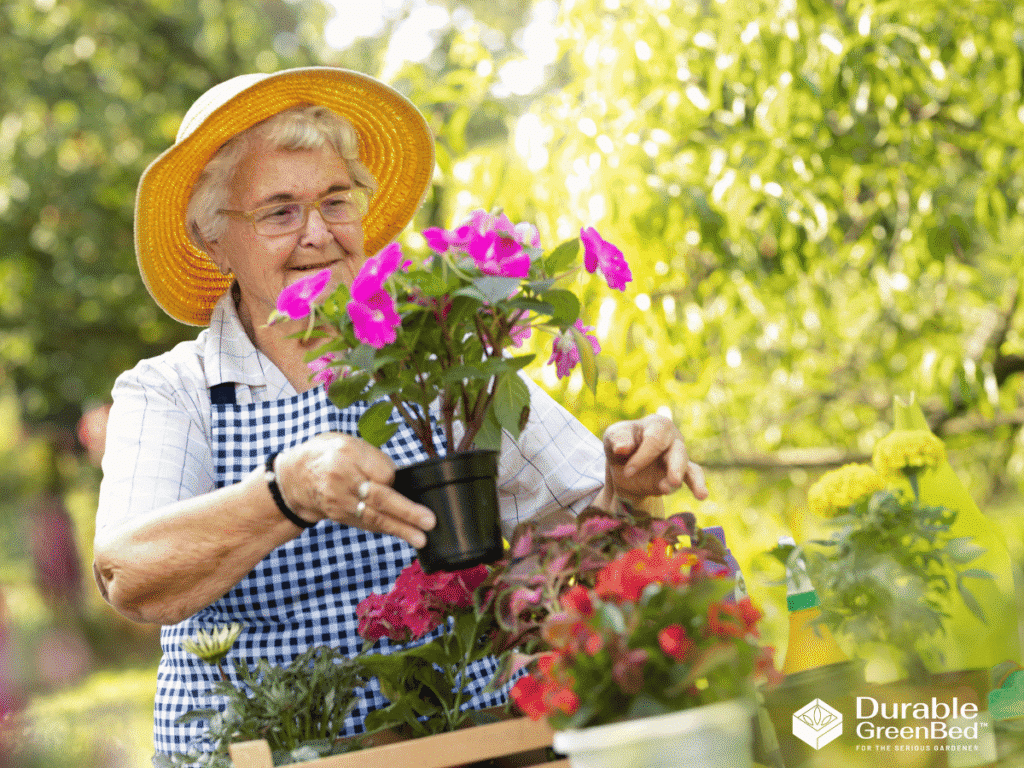
Within the gardening community, raised garden beds are known to have their advantages. They are aesthetically pleasing, protect from pests and weeds, have better soil drainage and keep your plants alive for a longer season than in-ground gardens. Whatever your reasons for choosing to opt for a raised garden bed, the most important factor to consider is the best materials to use to prolong the life of your garden. A good decision about which materials to use will keep your garden thriving in the long run and enable you to enjoy your gardening experience to the fullest. We have compiled a list of the best materials for raised garden beds and what you need to know about each garden bed material before making this crucial decision.
Let’s start with the basics and cover some of the most common materials for garden beds.
What are the Best Materials for Raised Garden Beds?
Here’s an overview of the most popular options, but continue reading for a more in-depth look at each of these materials.
- Wood: Wood is typically the most common material for raised gardens, but can be subject to rotting after long periods. The costs can vary widely, but generally wood is one of the cheapest materials for garden beds. However, certain types of wood can be unsafe for growing food – continue reading for more information.
- Composite Woodcrete: Made from a mixture of concrete and recycled wood materials, composite woodcrete is rot-resistant and more durable than natural wood. It’s also low maintenance but can be more expensive than other options in the short run, but saves money in the long run due to its long lifespan and decreased maintenance.
- Metal: Metal beds tend to outlast wood beds because of their exceptional durability. However, some types of metal are more heat-conductive than others, which can hasten soil warming and create unfavorable temperatures for certain plants.
- Plastic: Out of all the options, plastic is the cheapest material for garden beds, but it is much less aesthetically appealing than other options and is not environmentally friendly.
When choosing your garden bed materials, there are several factors to consider. These factors include durability, affordability, aesthetics, maintenance, and sustainability. Here we expand on each of these considerations:
What Are The Longest-Lasting Materials For A Raised Garden Bed?
As with any outdoor garden, it is important to use materials that will withstand weathering and damage. Most home gardeners look for a garden bed that boasts longevity. If you want a raised garden bed that will last for many years, choose a material like stone, brick, metal, or composite woodcrete.
What Are The Cheapest Materials For Raised Garden Beds?
Compiling all the necessary gardening materials is not cheap, and that includes garden bed materials. Wood is the most affordable option, but it will need to be replaced more often than other materials, and the cost of building a wood bed can sometimes be higher than paying upfront for a garden bed that is ready to assemble.
What is the Most Visually Appealing Material for Raised Garden Beds?
This comes down to personal preference. You should consider how the material will look in your garden and if you are a home gardener, how it blends with the style of your house. Wood, stone, and brick can all look very attractive. If you are choosing a garden bed with a long lifespan you should tend toward options with a timeless look so you’re not left with a garden that looks outdated in a few years because you went with the latest fad or trend.
What Raised Garden Bed Material Requires the Least Maintenance?
Some materials, such as composite woodcrete used in Durable GreenBed Kits, require very little maintenance. Others, such as wood, will need to be stained or sealed periodically.
What Are the Most Environmentally Friendly Materials for a Raised Garden Bed?
In trying to be a conscious consumer, consider if the materials are sustainably sourced and learn how they affect the environment. Durable GreenBeds are one of the greenest options on the market because they are made of recycled wood materials that have no risk of contaminating the soil of your garden.
With these factors in mind, we will expand on each of these materials for building your garden bed.
Using Wood in Raised Garden Beds
The Best Wood for Raised Garden Beds
Wood is the least expensive of recommended materials, and with proper construction, can last a decently long time. Some types of wood that can last for several years include cedar, cypress, black locust, and osage orange.
Cedar is a popular choice for raised garden beds due to its natural resistance to rot and insects. This is because cedar wood contains natural oils that act as preservatives. Cedar is fairly easy to find and is estimated to last around eight to ten years, so it is oftentimes considered the best wood for garden beds.
Many gardeners prefer the clean look of wooden garden beds, and they usually look nice alongside any type of home design.
When it comes to sustainability, many don’t realize that the lumber industry is considered highly sustainable, as many mills across the country support efforts in forest regeneration. Wood is a renewable resource, so it ranks high on sustainability.
The Drawbacks of Wood Garden Beds
The unfortunate thing about wood is that it doesn’t last as long as other materials, and requires more maintenance. Particularly with untreated wood, it can be subject to rotting when exposed to soil and wet conditions.
Certain types of wood, like pine, are more affordable than cedar, but won’t last as long. Depending on where you source the wood, it can be expensive. Generally, the more expensive the wood the more durable it is and the longer it will last, but this is not always the case.
There are wood preservatives, however, that can elongate the lifespan of wood. Mineral-based preservatives and organic seals are good options since they are non-toxic and eco-friendly. Treating wood yourself is fine as long as you do your research and choose a safe option.
You should never use pressure-treated lumber to build a garden bed. Pressure-treated lumber uses dangerous chemicals to reduce decay. These chemicals are safe when used in general construction, but you don’t want these chemicals leaching into your garden. For example Arsenic is a component of chromated-copper arsentate (CCA). Arsenic is a known carcinogen and causes many health issues when consumed including poisoning. CCA was voluntarily removed from manufacturing in 2003, but there is no law against using it to pressure treat wood. CCA is mainly a concern if you’re trying to repurpose old wood, but you still shouldn’t use new pressure-treated wood to build your garden either as you don’t want those chemicals in your garden either. The chemicals in the wood leach into the soil and are taken up by plants, which can make the food unsafe for consumption. Therefore, it’s best to be cautious and use untreated wood, which is a safe option for garden beds that contain food.
Woodcrete Composite Garden Beds
What is Woodcrete Composite?
Woodcrete composite is a hybrid of concrete and recycled timber. Our Durable GreenBed Kits are made from a mixture of Portland cement, wood chips, and sawdust. These recycled timber products are byproducts of other wood applications. Since these wood materials are not suitable for other construction methods, using them in garden bed panels saves them from ending up in a landfill. This gives you a sturdy high-quality design with a long lifespan with all of the added benefit of being eco-friendly and sustainable.
Woodcrete composite is not to be confused with wood-plastic composite also known as composite lumber. Wood plastic composite is made from post-consumer recycled plastic and recycled timber. A common example of composite timber would be a mixture of repurposed plastic bags and sawdust.
Composite lumber is usually used for decks, floors, or roofs because it is highly durable. We use TimberTech Trim in some of our raised garden bed kits, which is a wood-plastic composite. Consider upgrading your trim from cedar to TimberTech if you want added longevity and less maintenance.
Benefits of Woodcrete Composite
Unlike wood beds, composite woodcrete garden beds require significantly less maintenance, which will save you a lot of money and time in the long run. They are also easier to assemble than building a wooden garden bed yourself. For a more in-depth comparison of wood and composite woodcrete beds, click here.
It’s a more aesthetically appealing choice for your garden bed than plastic or pure concrete, and some options, like Durable Greenbeds, even have an attractive trim that is wide enough to sit on.
It’s also important to note that woodcrete composite is safe for growing food because its non-toxic materials won’t leach into the soil. Additionally, because it is made from recycled materials, woodcrete composite is a highly sustainable choice.
Affordability of Woodcrete Composite
Because of their engineering and high quality that makes them so durable, composite garden beds have a higher up-front cost than other materials. However, this initial cost is offset by the fact that with an investment in exceptional durability and low maintenance, you will spend less money in the long run.
Metal Raised Garden Beds
The Best Type of Metal for Garden Beds
Metal is another highly durable option for garden beds – it can last up to 30 years. It resists degradation and insect damage with minimal maintenance. Metal garden beds are also easy to assemble from the get-go. Galvanized steel is a popular choice for raised garden beds because it is durable, rust-resistant, and affordable.
Many gardeners are attracted to the aesthetic qualities of metal beds, which can be modern, industrial, or rustic depending on the design. Metal is also an environmentally conscious material, and industrial metals like steel are infinitely recyclable.
Metal’s Disadvantages
Metal garden beds tend to be pricier than wooden or plastic ones. Also, their high heat conductivity can be unfavorable in hotter climates, which can cause the soil to have high temperatures that can potentially harm plant roots.
Also, Metal beds are not as breathable as wood or woodcrete composite, which can prevent airflow in soil. Without proper drainage, they can gather water at the bottom of the raised garden bed and cause root rot, so ensure that your metal beds have holes at the bottom for drainage.
While they are safe to grow food in, some designs have sharp edges that could pose a safety risk to people, especially children.
For a deeper dive into metal garden beds, visit our newest blog post here.
Plastic Garden Beds
The Benefits of Plastic Garden Beds
Plastic is the cheapest out of all the possible materials for garden beds. It’s also surprisingly durable and can last for decades, as it stands up against all kinds of weather conditions and climates.
Raised plastic garden beds are lightweight and can be moved around easily, so they don’t require much maintenance in that sense.
The Downsides of Plastic
Plastic garden beds are not as attractive as other types of garden bed materials like wood or metal. They can look cheap and don’t have the same sophisticated look as other materials. Similar to metal beds, plastic blocks air circulation in your soil, so you will need to make sure your raised beds have holes to allow plants to breathe.
Lastly, plastic is inherently unsustainable and is harmful to the environment. Its long biodegrading process can trap microplastic particles in the environment for hundreds of years, which is harmful to all living things. Microplastics have also been found to leach into soil in home gardens, which is damaging to the soil and earthworm health as well as unsafe for crops.
Worst Materials For Your Garden Bed
Many garden bed materials are not safe for people, pets, and soil. Here is a list of materials that are not recommended for raised garden beds, particularly if you are growing edible food.
- Tires: While it might seem like a good idea to repurpose old tires, they are laced with chemicals such as lead and cadmium, which the soil will absorb. As mentioned before, the most important thing to consider is that your soil stays free from toxins so you don’t end up consuming the toxins from your plants.
- Pallets: Wood pallets that are stamped with “MB” have been treated with methyl-bromide, which is a dangerous chemical preservative. The MB will likely be taken up by soil and plants, making any food from your garden unsafe for consumption. Pallets that haven’t been treated, like those marked with “HT”, will work just fine.
- Polystyrene: Do not use old styrofoam coolers as raised pots, as polystyrene has been classified by the World Health Organization as a possible carcinogen, which is extremely harmful to wildlife and is non-biodegradable.
- Railroad Ties: railroad cross ties are common for building garden beds, but you should not use them if you are planning to grow food. They are treated with creosote, which is a pesticide with chemicals that are sure to leach into the soil and be absorbed by plants.
- Cinder block: Some cinder blocks contain toxic metals like lead, arsenic, and mercury, which makes any food unsafe to eat. If you are looking to use heavy-duty blocks, consider masonry bricks instead, which are made from clay.
With all this information in mind, trust that you will make the right decision about what material to use to build your garden bed. For more information catered to your needs, or if you’re looking for a customizable garden bed, feel free to contact us.
There's Nothing Like Durable GreenBeds
It's the Walls!™
- Breathable
- Well Draining
- Higher Yields
- Prevents Slugs and Pests
- Non-Toxic
- 20-25 Year Lifespan
Shop Durable GreenBed Kits
-
Rectangular Raised Garden Bed Kit
$471.00 – $2,085.00 Select options This product has multiple variants. The options may be chosen on the product page -
L-Shaped Raised Garden Bed Kit
$786.00 – $1,305.00 Select options This product has multiple variants. The options may be chosen on the product page -
U-Shaped Raised Garden Bed Kit
$1,199.00 – $2,446.00 Select options This product has multiple variants. The options may be chosen on the product page
Shop Durable GreenBed Raised Garden Bed kits
-
Rectangular Raised Garden Bed Kit
$471.00 – $2,085.00 Select options This product has multiple variants. The options may be chosen on the product page -
L-Shaped Raised Garden Bed Kit
$786.00 – $1,305.00 Select options This product has multiple variants. The options may be chosen on the product page -
4’x8’ Stepped Raised Garden Bed Kit
$865.00 – $1,073.00 Select options This product has multiple variants. The options may be chosen on the product page -
U-Shaped Raised Garden Bed Kit
$1,199.00 – $2,446.00 Select options This product has multiple variants. The options may be chosen on the product page

